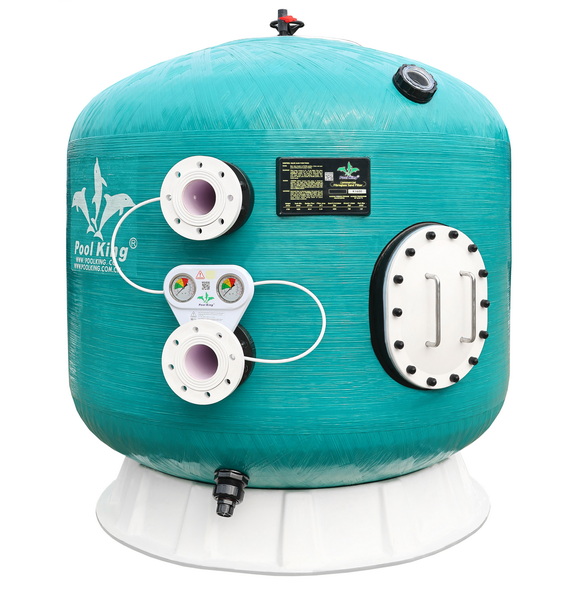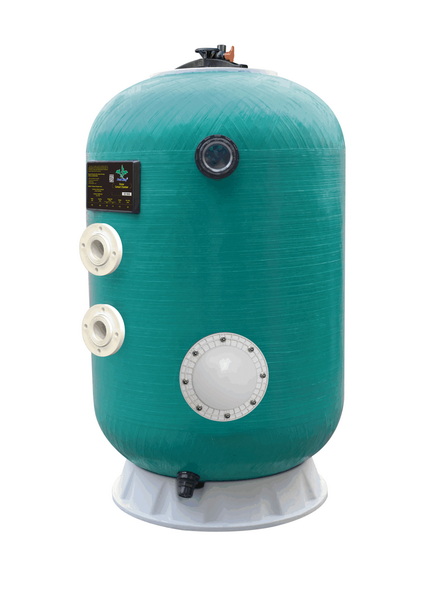







Content Menu
● Introduction to Pool Filtration
>> Sand Filters
>> Diatomaceous Earth (DE) Filters
● Signs That Your Pool Filter Needs Changing
● Lifespan of Different Filter Types
>> Sand Filters
>> DE Filters
● How OEM-China Factories Ensure Top Quality
● FAQs
>> 1. How often should I change my sand filter?
>> 2. Can I clean a cartridge filter instead of replacing it?
>> 3. What happens if I don't change my pool filter?
>> 4. Do DE filters require frequent replacement?
>> 5. Is OEM pool equipment reliable for long-term use?
Maintaining a clean and safe swimming pool depends on one essential factor: the performance of your pool filter. Whether you use a sand filter, DE filter, or cartridge filter, knowing when to change pool filter is vital for water clarity, hygiene, and long-term equipment efficiency. Neglecting to replace or clean your filter on time can lead to murky water, algae growth, and even damage to pumps and plumbing.
In this guide, we will explore the ideal replacement times for each filter type, signs of a clogged or failing filter, professional tips for maintenance, and how OEM-quality equipment from smart factories in China ensures lasting solutions.

Every swimming pool needs a filtration system to remove dirt, leaves, oils, and microorganisms that quickly contaminate the water. Without a properly functioning filter, pool chemicals alone cannot ensure safety and clarity. Pool filters trap particles and work with pumps to circulate and purify water, making them the heart of pool hygiene.
- Prevent algae and bacteria growth
- Keep water crystal clear
- Protect pumps and plumbing systems
- Ensure balanced water chemistry
- Prolong pool lifespan
There are three main categories of filters, each with its own maintenance cycle and replacement timeframe.
Sand filters use fine silica sand or glass media to trap debris as water passes through. Over time, sand particles wear down or get clogged.
Cartridge filters use pleated fabric elements that capture dirt and oils. These filters are easy to replace and ideal for residential pools.
DE filters use powdered fossilized diatom remains, offering the highest filtration precision but requiring more maintenance and careful handling.
Knowing when to change pool filter is as important as regular cleaning. Here are warning signs:
- Cloudy or discolored pool water despite proper chemical balance
- Higher than normal pressure on the filter gauge
- Decreased water flow in the pool circulation system
- Frequent need to backwash (sand and DE filters)
- Unsightly debris returning to the pool
- Noticeable odors or algae growth

- Typical lifespan: 5 to 7 years before sand replacement
- When to change: If water stays dirty after backwashing or sand hardens into clumps
- Full unit replacement: Around every 10 years
- Typical lifespan: 2 to 3 years for cartridges
- Replacement frequency: Clean every 2 months, replace when fabric tears or doesn't regain flow after cleaning
- Entire housing replacement: 7–10 years
- Typical lifespan: 2 years for filter grids, 10 years for the housing
- When to replace: If grids show fraying fabric or lose efficiency after recharging with DE powder
- Backwash sand and DE filters every 4–6 weeks
- Chemically clean cartridge filters with special cleaning solutions twice a year
- Always monitor the pressure gauge; a rise of 8–10 psi above normal means cleaning or replacement is required
- Ensure proper chemical balance to prevent clogging from calcium deposits or algae
- Keep the pool area clean to reduce leaves and debris entering system
- Waiting until water turns green before considering filter change
- Over-cleaning cartridges, causing fabric damage
- Using non-OEM filters that reduce efficiency
- Neglecting pump maintenance, which directly affects filter workload
- Not replacing DE powder after every backwash
As a leading Chinese manufacturer, we produce sand filters, cartridge filters, DE filters, pumps, LED lights, and accessories with the latest intelligent machines. Our OEM services allow international pool brands, wholesalers, and distributors to customize designs, packaging, and performance to fit their markets.
Advantages of OEM pool filter manufacturing:
- Automated precision ensures exact filtration levels
- High durability filter housings
- Cost efficiency for large-scale importers
- Continuous R&D for sustainable solutions
Knowing when to change pool filter protects your pool from cloudy water, algae, and damaged equipment. Sand filters, cartridge filters, and DE filters each have their own lifespan and replacement signals. By following maintenance schedules and working with a trusted OEM supplier, you prolong the life of your pool system and ensure swimming comfort.

Sand in pool filters should be replaced every 5–7 years, but the filter tank itself can last up to 10 years with proper maintenance.
Yes, cartridges can be cleaned multiple times, but after 2–3 years or if fabric tears, they must be replaced.
Unchanged filters lead to cloudy water, algae growth, and damage to pumps due to increased pressure.
DE grids last about 2 years, while the housing lasts around 10 years. However, DE powder must be replaced after every backwash.
Yes, OEM-manufactured filters and pumps from advanced factories meet international standards and can be customized to brand requirements.
